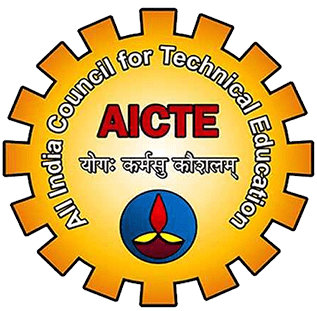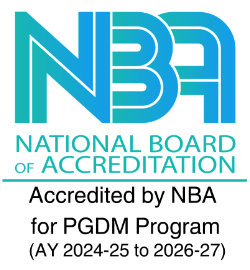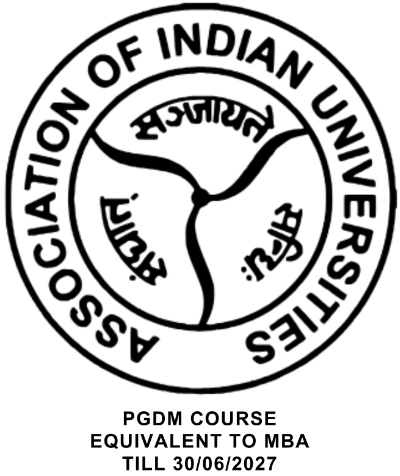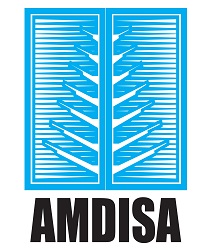PAPER SUBMISSION GUIDELINES
Types of Contributions
- Full length articles (5000–7000 words): Original high-quality research papers
- Management Cases (5000–7000 words) and Case Analyses (1000–1700 words)
- Review Articles (up to 5000 words): Critical literature review of published work
- Perspectives (1000–3000 words): Opinion-based articles
- Book reviews (800–1200 words) are also welcome.
Document Submission Guidelines
- Original Manuscript: Articles should be written in MS Word, Times New Roman font, and should be submitted in soft copy.
- Executive Summary: All articles must have an executive summary of about 400 words.
- Abstract: All articles must be accompanied by an abstract of 150–200 words and 4–6 keywords.
- Title Page: Manuscripts should be submitted with the cover page bearing only the title of the article, author/s’ names, designations, official addresses, phone/fax numbers, and email addresses. Author/s’ name should not appear on any other page.
The title page must clearly indicate the name of corresponding author who will handle communications at all stages of refereeing and publication, also post-publication.
The authors must ensure that phone numbers (with country and area code) are provided in addition to the e-mail address and the complete postal address. Contact details must be kept up to date by the corresponding author. - Authors Biography: Authors must provide a biographical sketch of about 60 – 80 words. They may include information about their current designation and affiliation, specialization, number of books and articles published in refereed journals.
- Photographs and Scanned images: All photographs/scanned images should be provided separately. All photographs and scanned images should have a resolution of minimum 300 dpi and 1500 pixels and their format should be TIFF or JPEG.
- Declaration Form: MDIM Business Review encourages authors to include a declaration of any conflicting interest recommends you review the good practice guidelines on the MDIM Journal Author Gateway.
- Copyright Form: MDIM Business Review is committed to upholding the integrity of the academic record. The journal encourages authors to refer to the Committee on Publication Ethics “ Internal Standards for the author.
Manuscript Formatting Guidelines
A. Formatting guidelines:
The manuscript must adhere to below mentioned guidelines.
- Manuscripts must be submitted through email at editorialdesk@mdim.ac.in. For manuscript submission related queries, please contact editorialdesk@mdim.ac.in.
- Use British spellings in all cases rather than American spellings (hence, ‘programme’ not ‘program’, ‘labour’ not ‘labor’, and ‘centre’ and not ‘center’).
- Use ‘z’ spellings instead of ‘s’ spellings. This means that words ending with ‘-ise’, ‘isation’, etc., will be spelt with ‘z’ (e.g., ‘recognize’, ‘organize’, ‘civilize’).
- Use single quotes throughout. Double quotes only to be used within single quotes. Spellings of words in quotations should not be changed. Quotations of 45 words or more should be separated from the text and indented with one space with a line space above and below.
- Notes should be numbered serially and presented at the end of the article. Notes must contain more than a mere reference.
- Use ‘twentieth century’, ‘1980s’. Spell out numbers from one to nine, 10 and above to remain in figures. However, for exact measurements, use only figures (9 per cent, not nine %). Use thousands and millions, not lakhs and crores.
- Use of italics and diacriticals should be minimized, but used consistently.
- Tables and figures to be indicated by numbers separately (see Table 1), not by placement (see Table below). Present each table and figure on a separate sheet of paper, gathering them together at the end of the article. All Figures and Tables should be cited in the text. Sources for figures and tables should be mentioned irrespective of whether or not they require permissions.
- Due permissions should be taken for copyright protected photographs/images. Even for photographs/images available in the public domain, it should be clearly ascertained whether or not their reproduction requires permission for purposes of publishing (which is a profit-making endeavor).
- A consolidated listing of all books, articles, essays, theses and documents referred to (including any referred to in the tables, graphs and maps) should be provided at the end of the article.
B. Arrangement of references:
- Reference list entries should be alphabetized by the last name of the first author of each work. In each reference, authors’ names are inverted (last name first) for all authors (first, second or subsequent ones); give the last name and initials for all authors of a particular work unless the work has more than six authors.
- If the work has more than six authors, list the first six authors and then use et al. after the sixth author’s name.
- Chronological listing: If more than one work by the same author(s) is cited, they should be listed in order by the year of publication, starting with the earliest.
- Sentence case: In references, sentence case (only the first word and any proper noun are capitalized – e.g., ‘The software industry in India’) is to be followed for the titles of papers, books, articles, etc.
- Title case: In references, Journal titles are put in title case (first letter of all words except articles and conjunctions are capitalized – e.g., Journal of Business Ethics).
- Italicize: Book and Journal titles are to be italicized.
C. Citations and References guidelines:
- Citations and References should adhere to the guidelines below (based on the Publication Manual of the American Psychological Association, 6th edition). Some examples are given below:
In text citations:
- One work by one author: (Kessler, 2003, p. 50) or ‘Kessler (2003) found that among the epidemiological samples..’.
- One work by two authors: (Joreskog & Sorborn, 2007, pp. 50–66) or Joreskog and Sorborn (2007) found that.
- One work by three or more authors: (Basu, Banerji & Chatterjee, 2007) [first instance]; Basu et al. (2007) [Second instance onwards].
- Groups or organizations or universities: (University of Pittsburgh, 2007) or University of Pittsburgh (2007).
- Authors with same surname: Include the initials in all the in-text citations even if the year of publication differs, e.g., (I. Light, 2006; M.A. Light, 2008).
- Works with no identified author or anonymous author: Cite the first few words of the reference entry (title) and then the year, e.g., (‘Study finds’, 2007); (Anonymous, 1998).
- If abbreviations are provided, then the style to be followed is: (National Institute of Mental Health [NIMH], 2003) in the first citation and (NIMH, 2003) in subsequent citations.
- Two or more works by same author: (Gogel, 1990, 2006, in press)
- Two or more works with different authors: (Gogel, 1996; Miller, 1999)
- Secondary sources: Allport’s diary (as cited in Nicholson, 2003).
References:
Books: Patnaik, Utsa (2007). The republic of hunger. New Delhi: Three Essays Collective
Edited Books: Amanor, Kojo S., & Moyo, S. (Eds) (2008). Land and sustainable development in Africa. London and New York: Zed Books.
Translated books: Amin, S. (1976). Unequal development (trans. B. Pearce). London and New York: Monthly Review Press.
Book chapters: Chachra, S. (2011). The national question in India. In S. Moyo and P. Yeros (Eds), Reclaiming the nation (pp. 67–78). London and New York: Pluto Press.
Journal articles: Foster, J.B. (2010). The financialization of accumulation. Monthly Review, 62(5), 1-17. doi: 10.1037/0278-6133.24.2.225 [DOI number optional]
In-press article: Briscoe, R. (in press). Egocentric spatial representation in action and perception. Philosophy and Phenomenological Research. Retrieved from http://cogprints.org/5780/1/ECSRAP.F07.pdf
Newspaper article: Schwartz, J. (1993, September 30). Obesity affects economic, social status. The Washington Post, pp. A1, A4.
Newsletter article, no author: Six sites meet for comprehensive anti-gang intiative conference. (2006, November/December). OOJDP News @ a Glance. Retrieved from http://www.ncrjs.gov/html
[Please do not place a period at the end of an online reference.]
Non-English reference book, title translated into English: Real Academia Espanola. (2001). Diccionario de la lengua espanola [Dictionary of the Spanish Language] (22nd ed.). Madrid, Spain: Author.
Special issue or section in a journal: Haney, C., & Wiener, R.L. (Eds) (2004). Capital punishment in the United States [Special Issue]. Psychology, Public Policy, and Law, 10(4), 1-17.
NB: Book reviews must have details like name of author/editor and book reviewed, place of publication and publisher, year of publication, number of pages and price.











